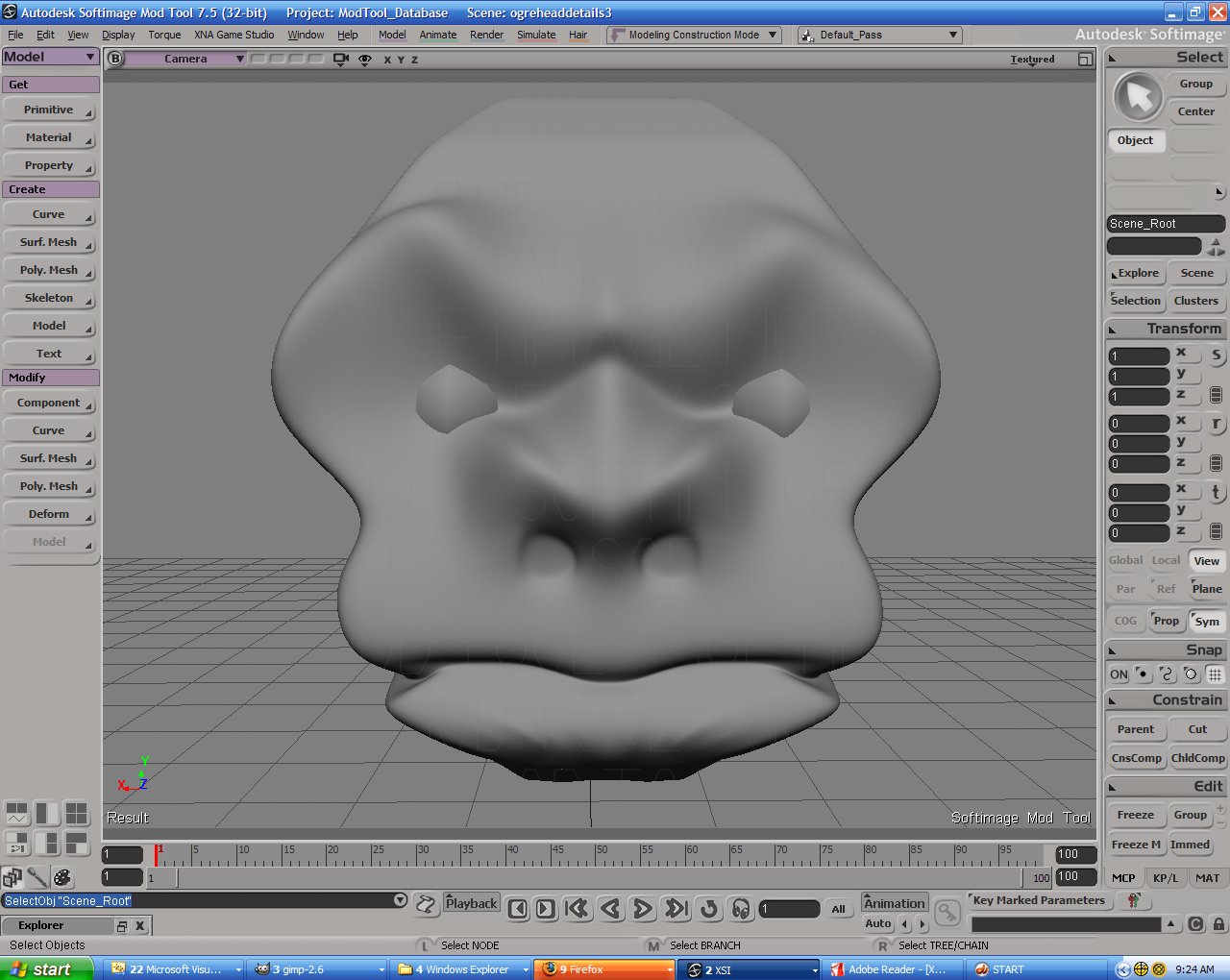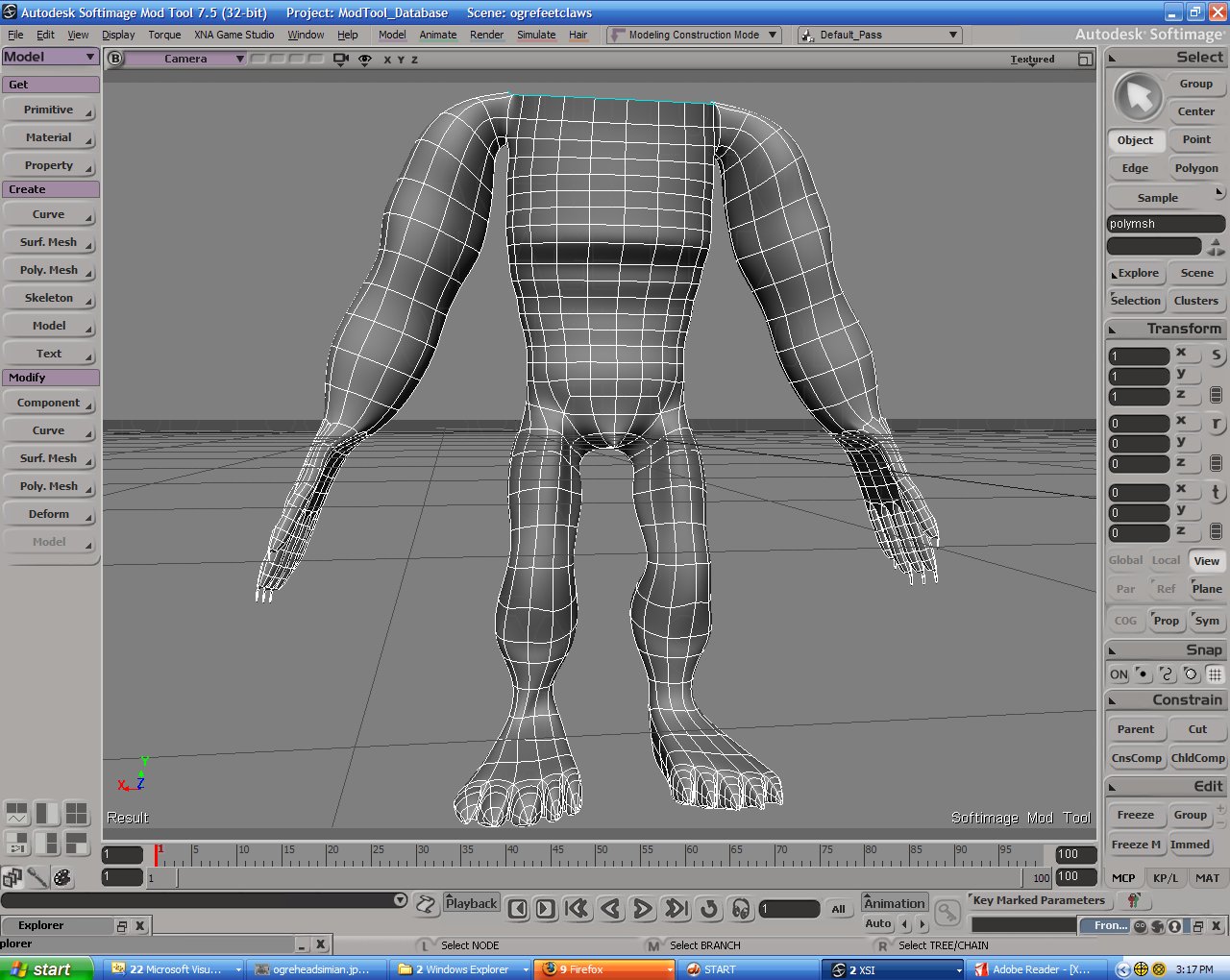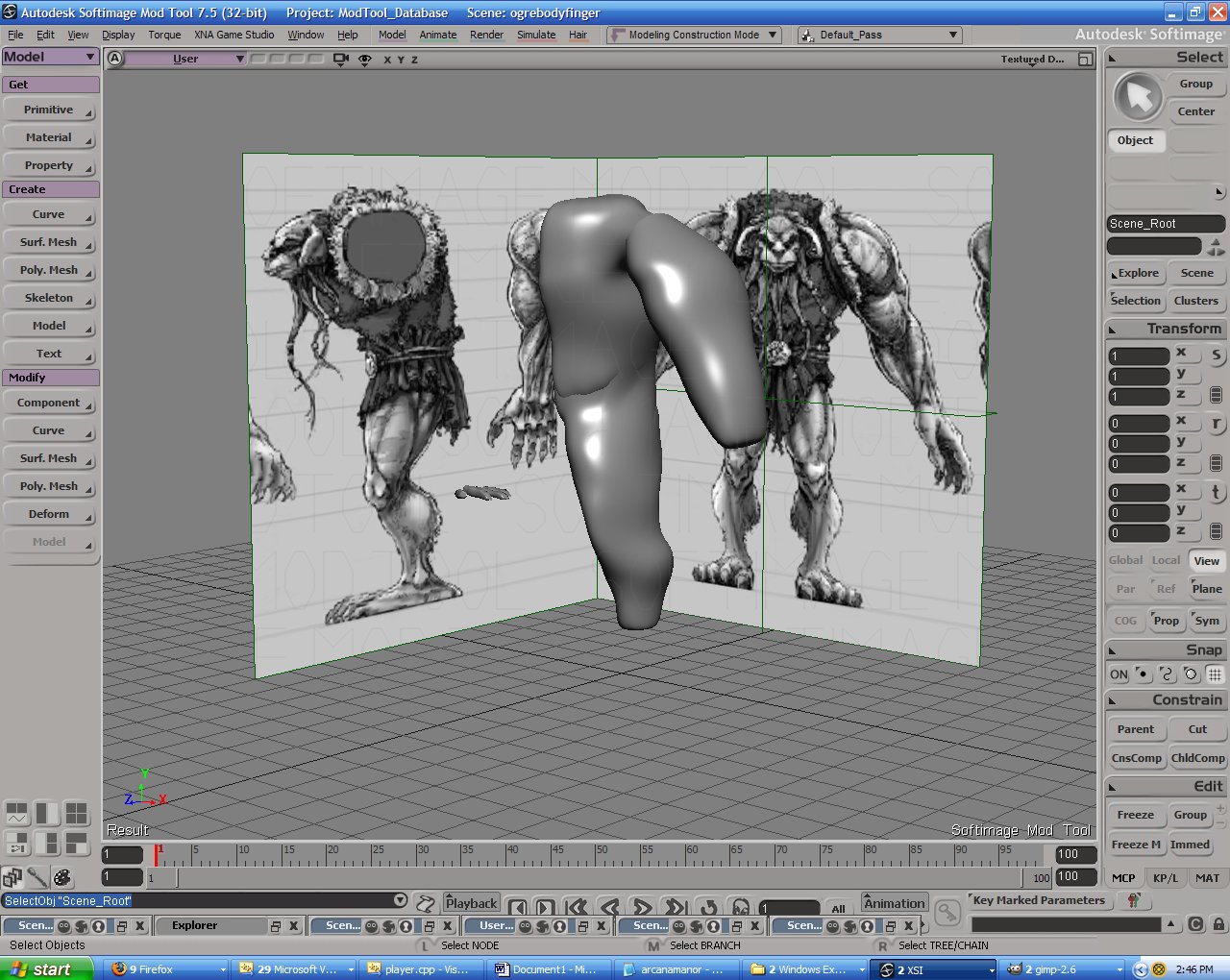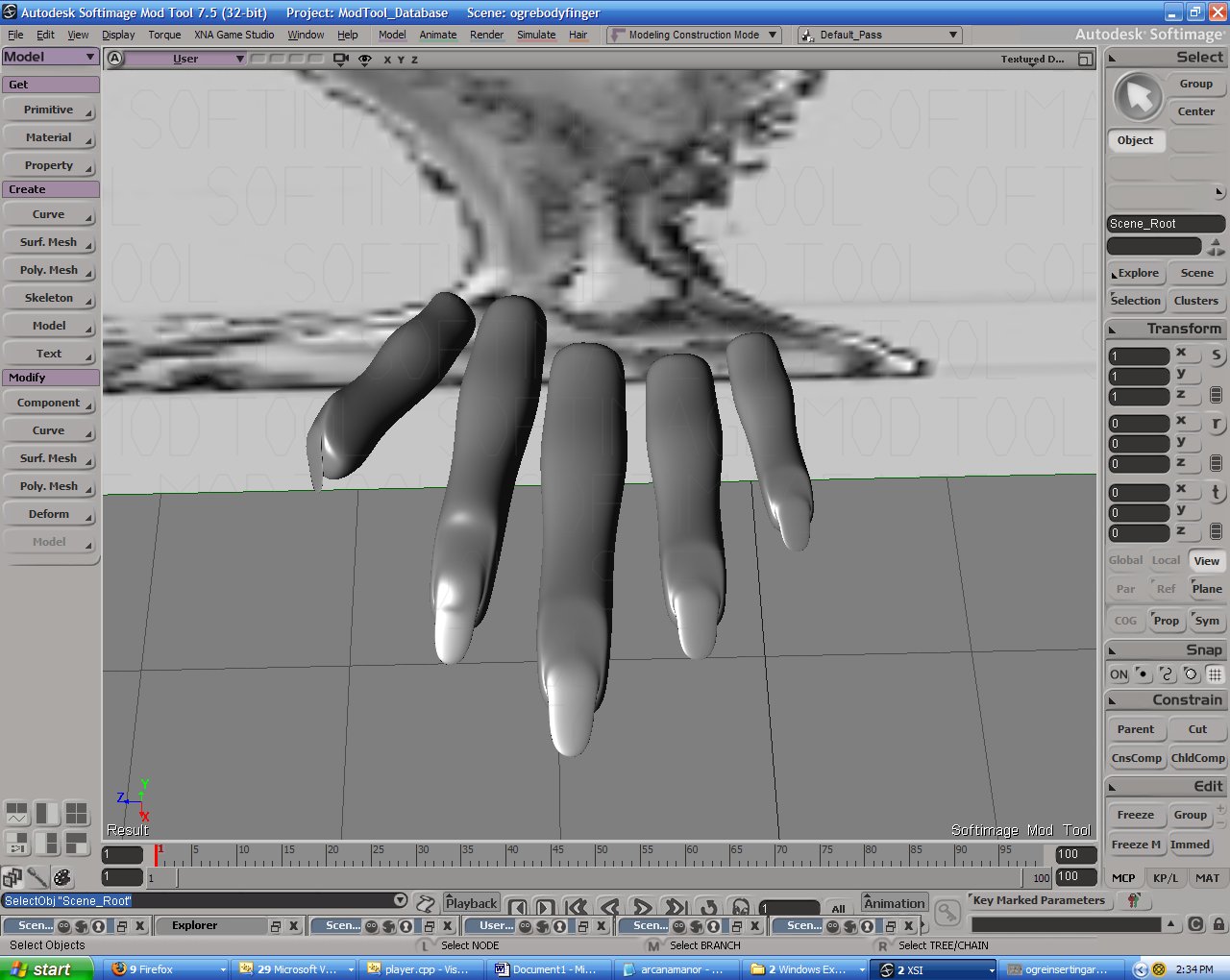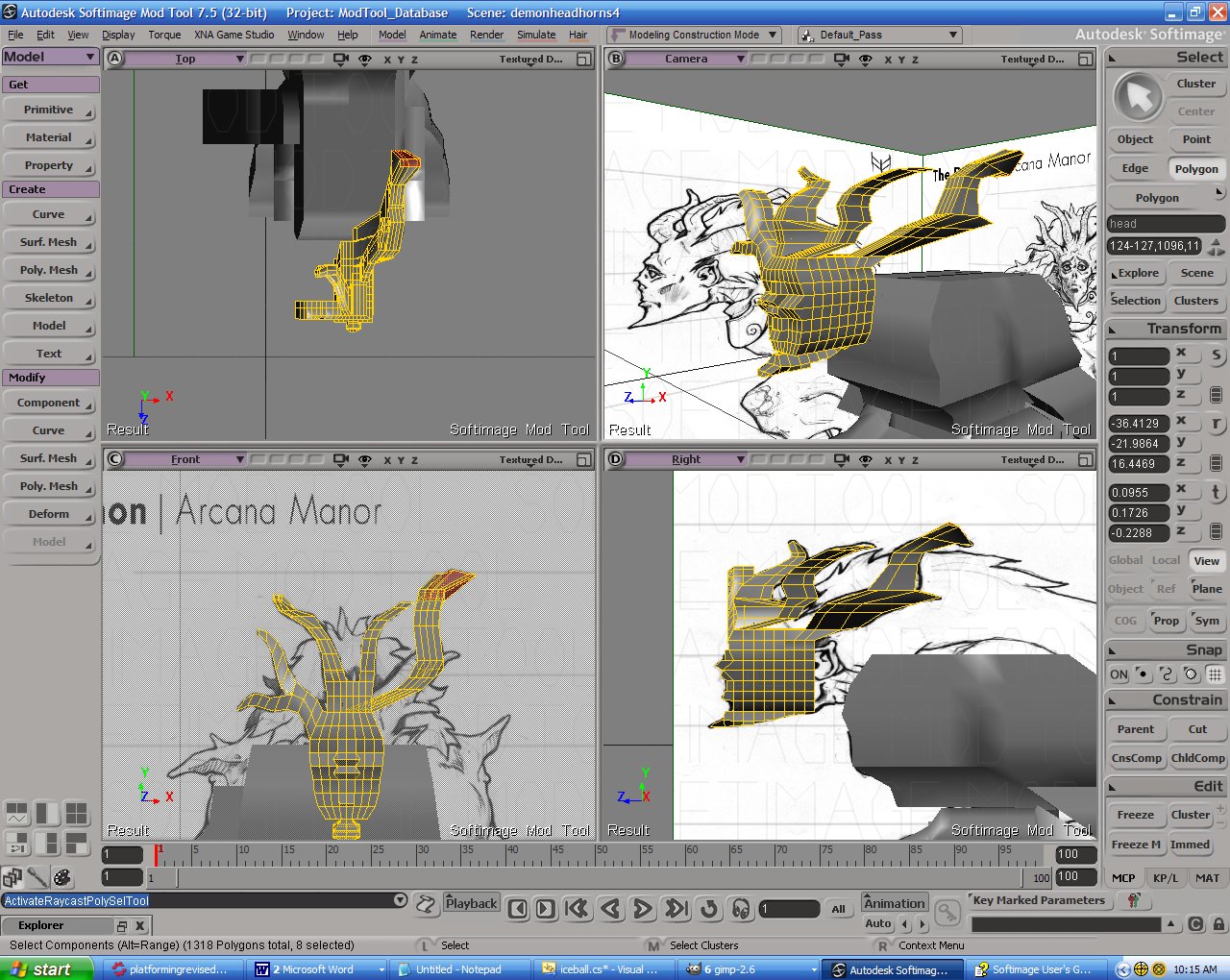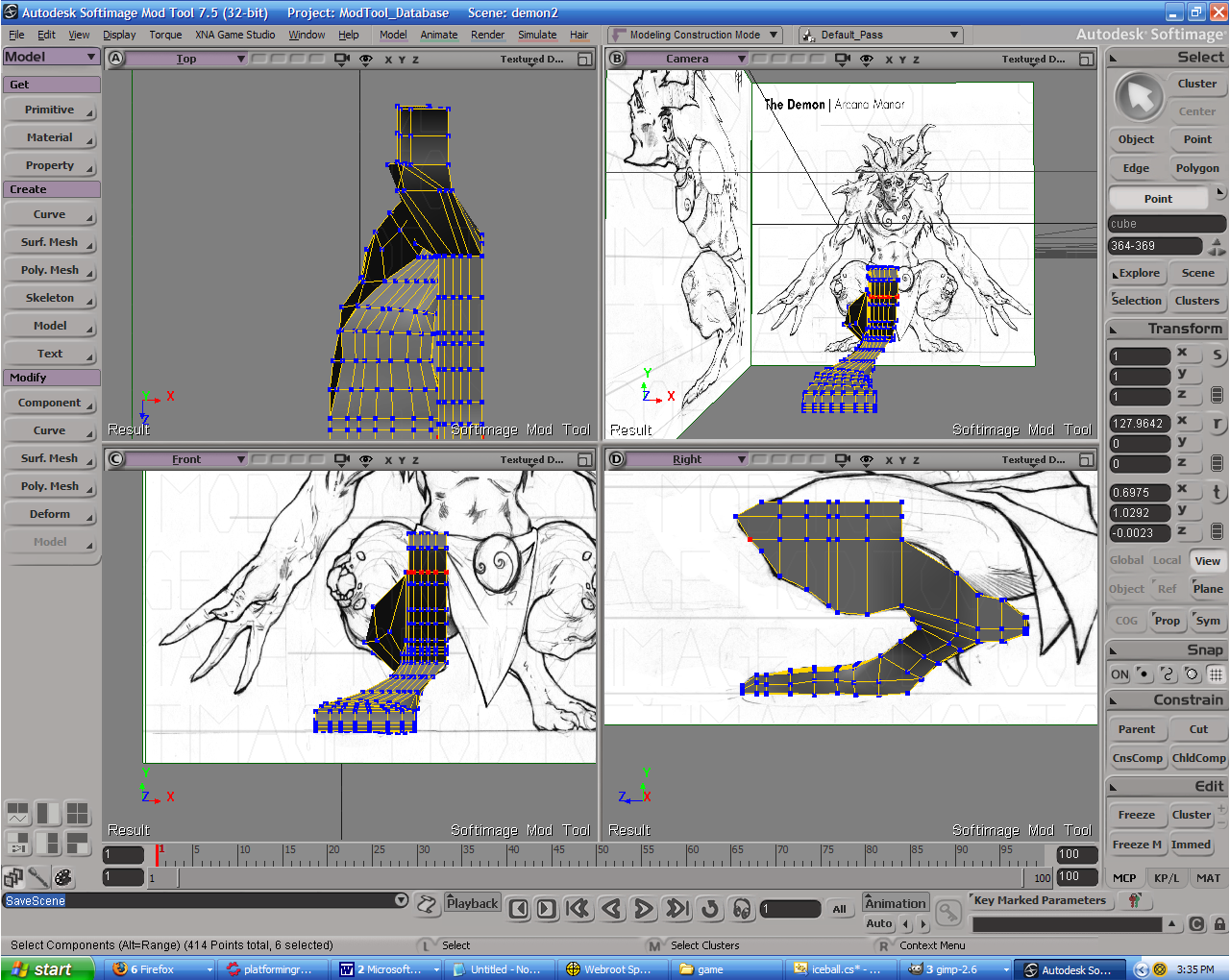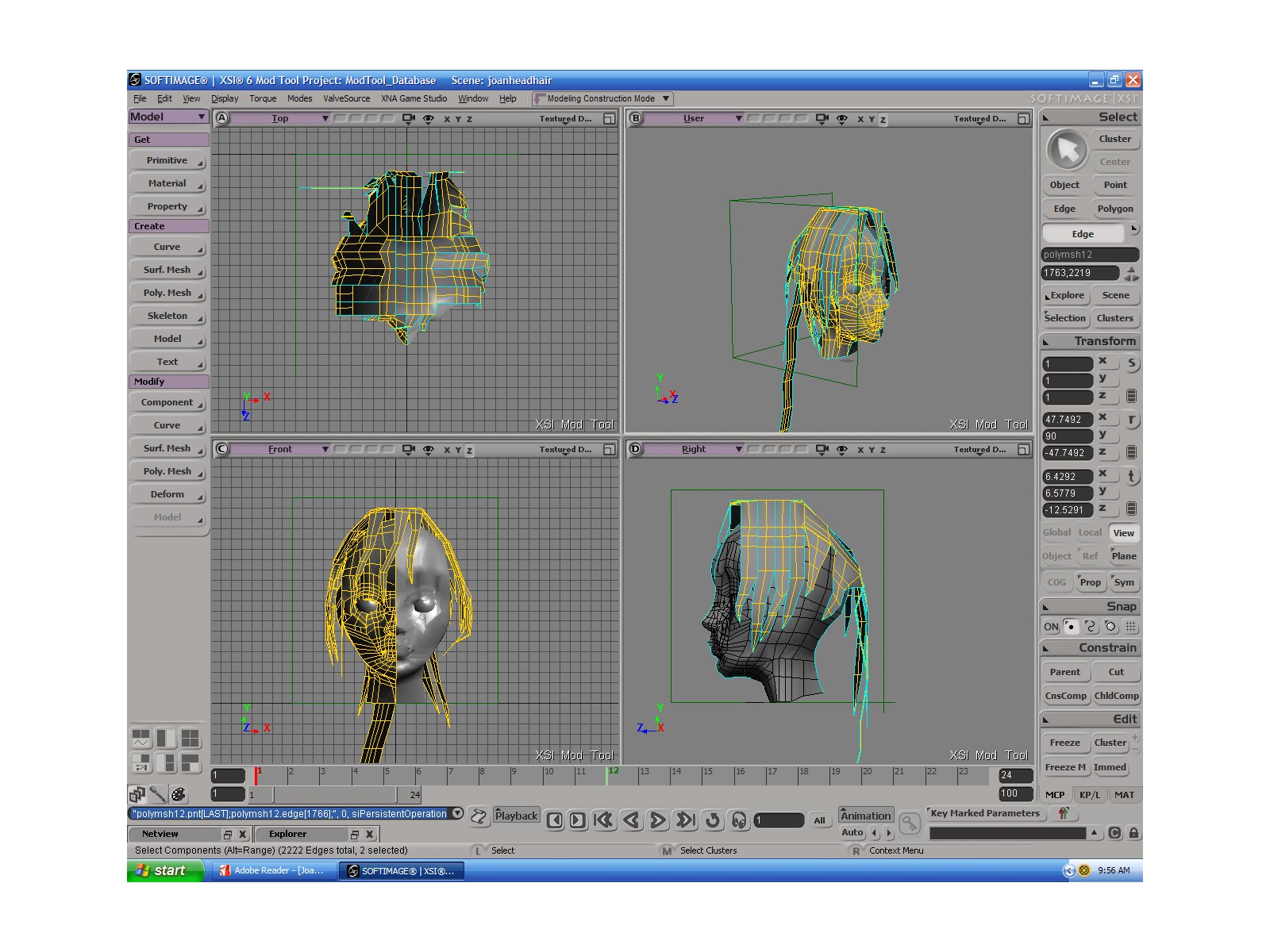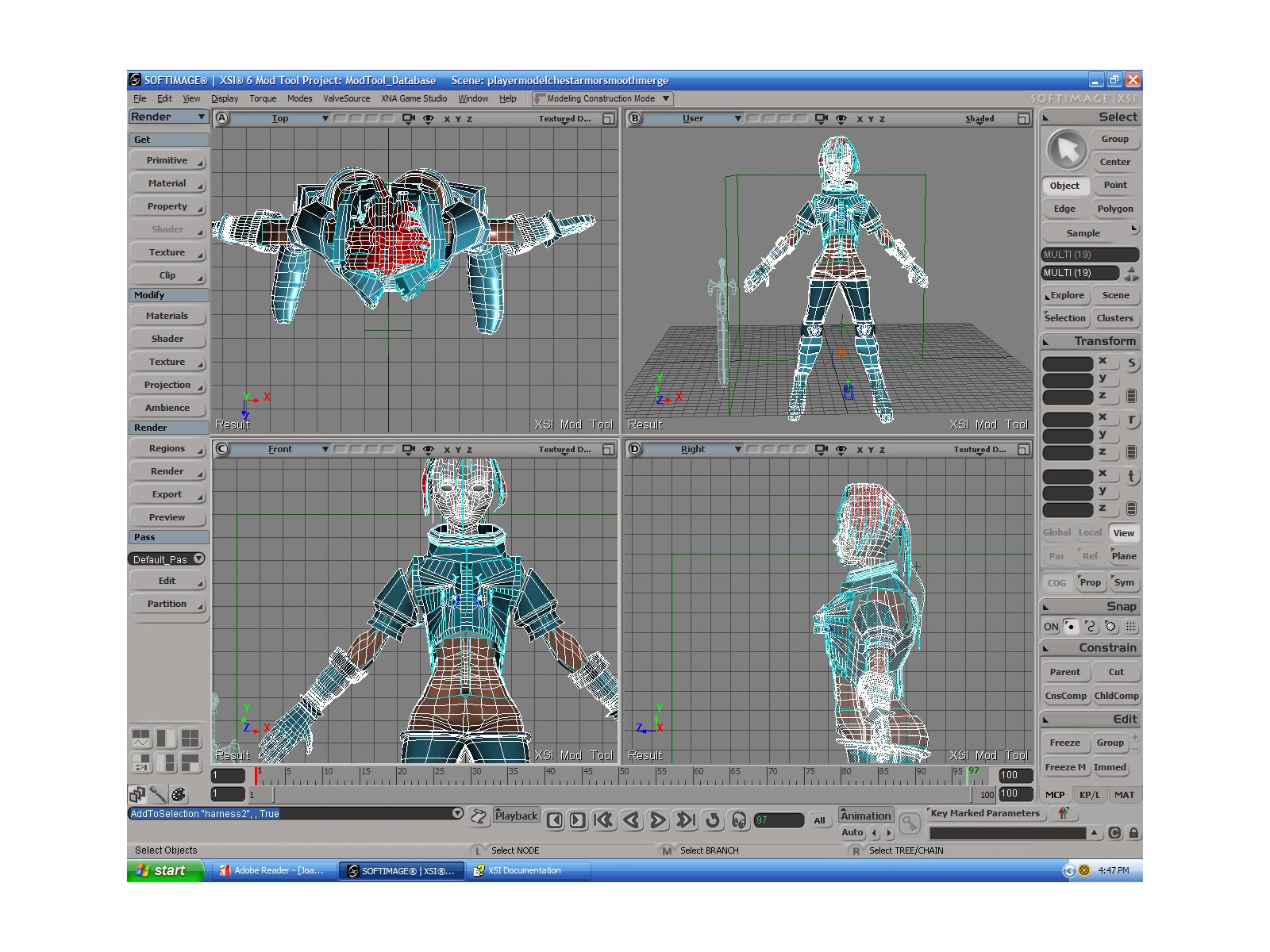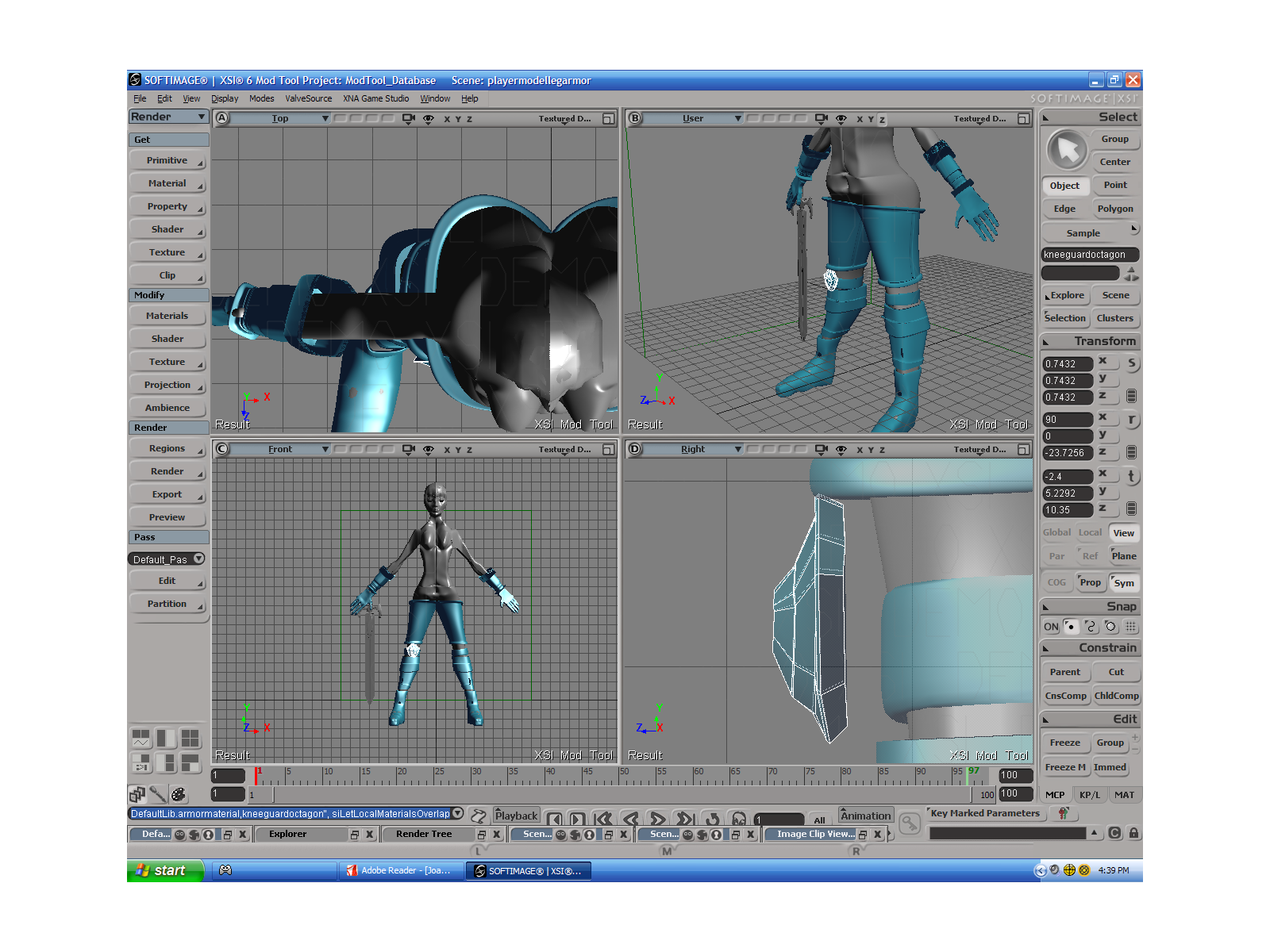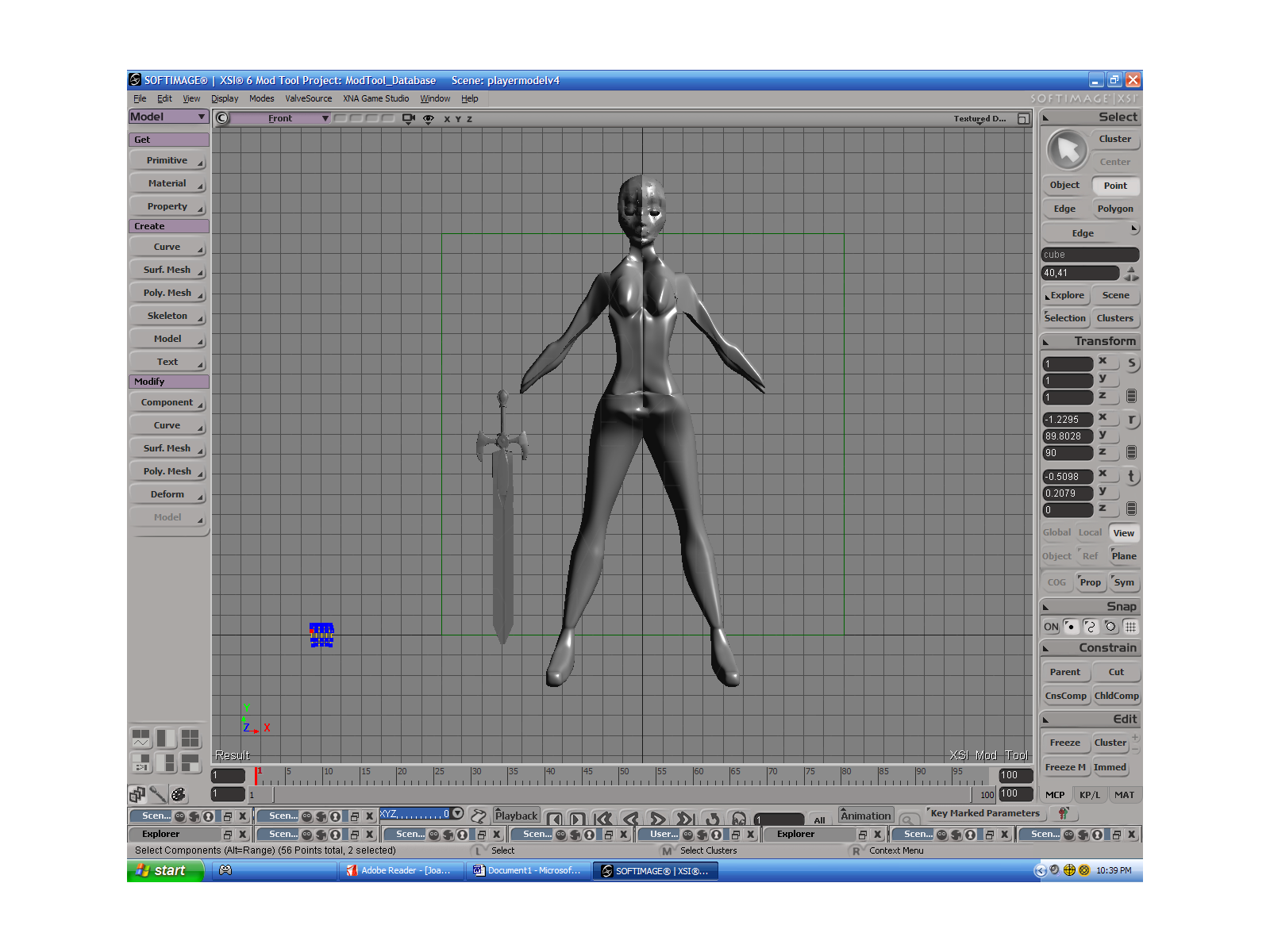Well, I finished the polygon modeling portions of the ogre model and embarked on the uv mapping portions. Unfortunately, I’ve discovered that Softimage Mod Tool 7.5 has some quirks that make this process a little more difficult. First, the export as .obj file option has been removed from Mod Tool 7.5, which means that I can no longer export scenes into a form that could be opened by Roadkill, a uv unwrapping application. Mod Tool 6.0, which still had the export as .obj option, can’t open scenes from Mod Tool 7.5. The pelt unwrapping method, which is a smoother and cleaner way of uv unwrapping organic, curvy shapes, is not present in Mod Tool and maybe not in Softimage at all. This is unfortunate, since Ward’s book relies heavily on pelt mapping. I probably just need to learn to do basic cylindrical and cubic sub-projections using Mod Tool’s texture editor.
Tag Archives: 3d modeling
Ogre model complete
modeling an ogre
For the last two days, I’ve been working on the ogre tutorial from Antony Ward’s Game Character Development. I went through two iterations of the main modeling portions of the tutorial, which entail building a torso, arms, legs, feet, and a head. The second iteration looks better than the first.
First-person spells and current-gen character development
Over the last few days, I’ve been implementing some first-person spells in Arcana Manor, i.e. spells that look good from a first-person perspective, which is not really the format for which ArcaneFX is designed. Gareth Fouche (a Garagegames community member and Torque designer) made a good spell-casting resource that uses projectiles to cast spells–an approach that resembles Oblivion (or Undying) instead of a third-person MMO. Fouche’s approach is the one I want, but it will take some tweaking to get this going with ArcaneFX.
I also have been working through an excellent book by Anthony S. Ward called Game Character Development. The book gives a very detailed overview of the processes involved in current-gen character development (i.e. Xbox 360 and PS3), which entails several more steps than the previous-gen workfolow.
In previous-gen character development, the game artist would use a modeling application like 3dsmax or Maya to build the character out of polygons, then UV map the character and texture it in Photoshop.
The main difference between the previous-gen and current-gen approach is the current-gen use of sculpting programs like Mudbox or Z-Brush to paint details onto a model which would have been too time-consuming and memory-intensive to be accomodated on previous-gen hardware. The artist then converts these details into a normal map, which is an RGB image whose pixel colors indicate the directions in which the model’s normals should be transformed. (Previous-gen character art tended to include bump maps, which were grayscale images that could indicate only elevation, rather than normal maps. Current-gen development includes both bump maps and normal maps, as well as other shader-based modifiers such as parallax maps and ambient occlusion maps.)
All of which suggests one thing: I need to recruit a modeler so that I can focus on scripting and programing the game’s magic system rather than building its models. ![]()
Actually, it’s more a matter of emphasis. It’s still good to work on 3d models (which could represent characters summoned by the player or custom aspects of the player, such as hands for first-person casting), but the production of art assets is so time-consuming that it would be best to recruit someone whose main talent and experience is in models.
That said, I’ve been working on an ogre tutorial in Ward’s book, and here are a few screenshots.
modeling the demon’s horns
modeling a character
After completing the modeling of the Joan of Arc tutorial, I’m now working on a model of an original character in Autodesk Softimage (formerly Softimage XSI). Ron Smith drew some excellent orthogonals (concept sketches that are exactly proportional to each other and can be placed at 90 degree angles to be used as guides for making a 3d model).
Here is the verbal description of the character that I gave Ron.
“Imagine a demon summoned by Knossos, the architect, when he realized that he needed supernatural help to build his manor but did not understand just how dangerous and corrupting this help could be. The demon is in some ways a standard balor-type monster: large, red-skinned, winged, horned, and clawed. He could tear a feeble architect’s head off, or his sister’s, without a second thought. But there is something sad and thoughtful in his face, a pensively furrowed brow, a far-off look. He has seen so many foolish humans sell their souls for so little, and even though he should be the Mephisto character in this Faustian drama, he takes no glee in the role. He’s almost more of a genii in a lamp who has grown weary of the same 3 wishes and the way that they always destroy the wishers. He holds a book in his hand: a giant, leather-bound, brass clamped tome, which is the Necronomicon-like architect’s notebook that will be so central to the unfolding of the manor’s mystery. Eliza will be forced to summon this creature in order to find out what happens to her brother, but in doing so she takes all the risks of a conjurer, because the answers that demons give are never straightforward and they may turn on their captor at any moment if there is some slip-up in the ritual, some edge of the magic circle that isn’t drawn in fully. So this character should look supremely ambiguous: pissed and menacing, but potentially helpful, depending on how skillful our player turns out to be.”
And here are Ron’s orthogonals:
And here are the orthogonals placed onto grids as guide images in Softimage. I’m currently modeling one of the demon’s legs.
Here is a shot of further progress, including the demon’s haunches, torso, and shoulders.
Joan head and hair
Joan of Arc armor, part I
Joan of Arc model
Here is a screenshot of a model that I’ve been making in XSI. This is the XSI version of the famous “Joan of Arc” tutorial. I had to do the body portion of the tutorial twice, but the second time produced smoother results. If I finish the entire tutorial, which is excellent but very long and complex, I will need to make Joan’s hands, ears, and all the pieces of her armor. Then, I’ll need to UV unwrap all of her accessories, paint textures for them, and assign appropriate materials to each of her body parts. Lastly, I’ll rig her for animation by building a skeleton of bones and chains inside of her body. The complexity of this process shows just how involved character design can be when one designs one’s own art assets, but it is very satisfying to watch a single cube slowly be extruded and shifted until it forms a human body.

